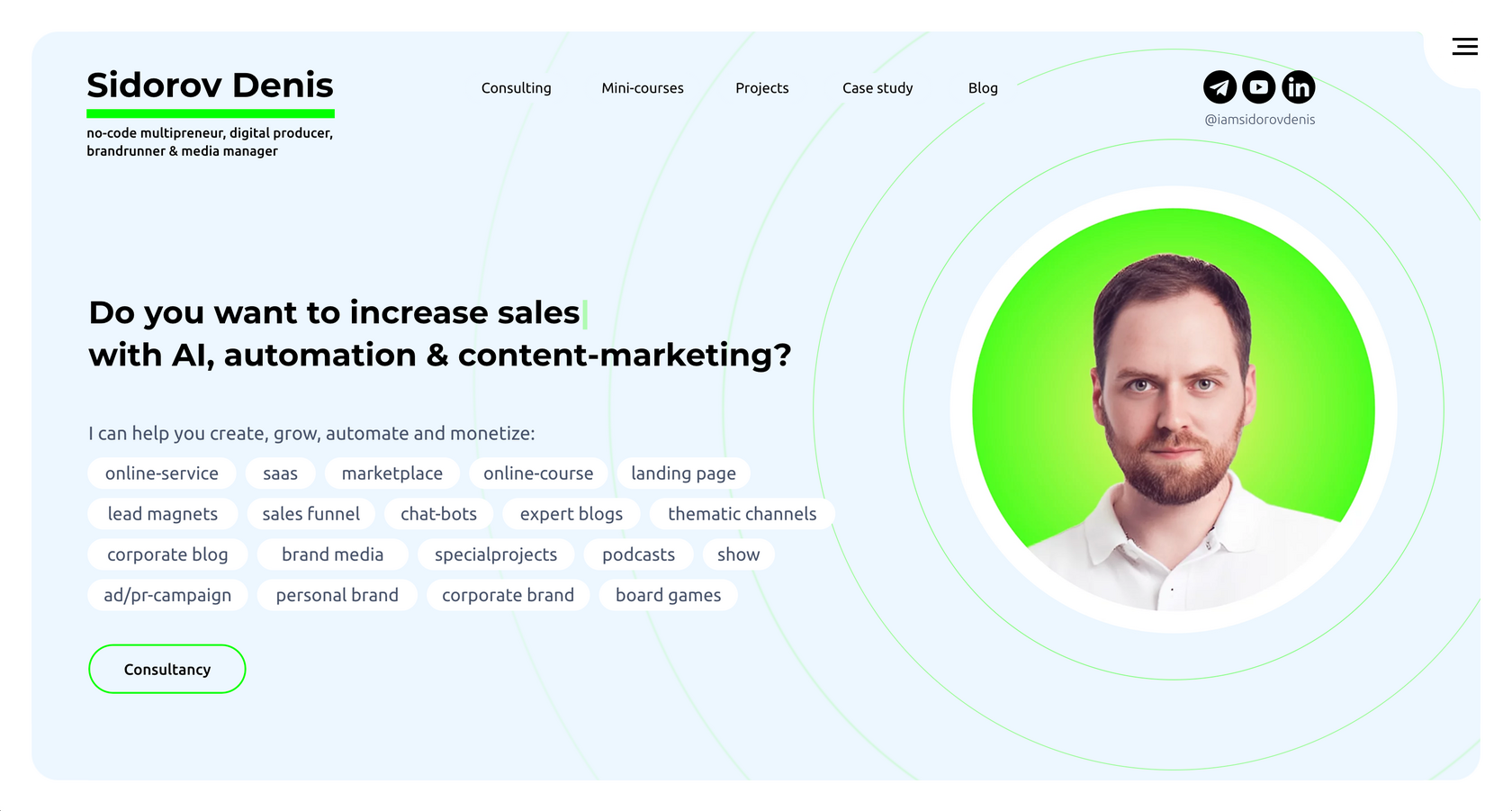Business + Design: why does digital need alliances?
Personal experience and opinions of AIC, Geller Lab, Creative People and other agencies on the merger of PINKMAN Studio and integrator First Bit
The agency segment is mostly represented by young people who have youthful ideas about business, which affects the market as a whole. Only a handful of people are moving into the "big business" category. Misha Rozov, founder of the PINKMAN studio, tells us what we need to do to make this happen more often, and why we should not be afraid of big partners, using the example of his association with the international IT integrator First Bit.
It is very difficult to build a full-cycle digital production, in which all groups of teams work - from business analysts to developers and testers. It is even more difficult to make sure that there are no lagging departments in the company, where, for example, developers would always keep up with designers. Perhaps the Russian market knows very few such examples.
We have always tried to assemble a team that would be interesting and cool to work with. Since I am a designer, and my partner Sergey Orekhov is a real systems man, we managed to create a company where the work of the design department, including the frontend, is clearly and understandably organized. We spent 2.5 years, which the company has been in existence, to set up these processes. Since, none of us is a programmer, we always had a sticking point with the server side of programming. We tried to grow that competency internally. But while on average, the quality of our design and frontend has always ranged from good, to excellent, the level of the backend ranged from bad, to, at best, okay. Because of our lack of experience, we could miss deadlines, not do it well enough, or estimate the work incorrectly - this made our life very difficult and was one of the first reasons for finding a partner.
We quickly grew to 25 people and a turnover of 54 million, thanks, among other things, to the fact that we went head to head. In the very beginning, we used the money from the projects that had just come in to hire new people, missed deadlines, and immediately took more orders. But as we develop, such a dangerous factor in the agency business as a cash gap inevitably begins to hang over everyone. At some point it can cause you not to be able to pay your salary or rent, which cannot be allowed even in an illusory world.
And then there is a dilemma: either you grow further, taking on these risks, or you stagnate, developing very cautiously - you cannot take on new people and have to put all your efforts into optimization. Even a slight possibility of the first option was unacceptable to us, and slow and constrained development always seemed a boring prospect. Besides, there is always the risk of getting stuck somewhere at the tail end of the market, from which it is not easy to get out later.
If you have something to give, but lack something yourself, then you need a partner. When you have all the prerequisites for rapid growth but lack resources, you need a partner in one form or another. You may even already know one, which is how it happened with us.
First Bit's priority has always been technically complex projects that we never dreamed of: a system for accrediting doctors and a website for First Med, the automation of a logistics company in Africa or the media office of the Dubai government. At the same time, there is a lack of expertise in design (or rather, it was so before us), but an endless number of programmers. Backend development teams sit in 6 cities and they code perfectly. They code every day just like we code the design. If the Moscow team, for example, is busy, we can work with Krasnoyarsk or another city on the list. Now, when another big project comes to us, we no longer have to tell the client: "You'll have to wait four months because our backend is weak, so just sit in the hallway".
We didn't have a focus on design. We were more focused on creating complex technical solutions. At the same time, we realize that the market is reaching a new level, the customer is becoming more demanding and our design expertise is no longer enough. PINKMAN, on the other hand, has the competencies that we would have had to create long and costly on our own. Now, together we can cover all customer needs.
For a company to develop any areas, it is necessary to raise specialists keep them on staff, and hire art or technical directors, which is too expensive. The sphere is relatively young and has not yet developed the three competencies developed organically in a company: design, front, and back. Each studio is built either by a designer or a technician, and it is almost impossible to find three competencies in one company today.
Not for nothing, partnerships in the digital market are a frequent phenomenon, but sometimes it happens at the level of statements, joint lending and client sharing. The internal processes do not change in any way and after a while it is clear that by and large everything remains the same. Although we continue to work under different brands, in fact it is one team, as First Bit acquired a stake in PINKMAN. Therefore, there is responsibility at the level of the structure of a large company.
Dmitry Prokofiev,Mr. Dmitry Prokofiev, Head of Web-direction, First Bit
Finding a competent design team for reasonable money is not easy. Finding one with a frontend inside is even harder. And among the market leaders you will rarely find the formula "design+front+back" at a really strong level - many large agencies hide from the client that they use outsourcing, saying: "Yes, yes, we do everything ourselves". That's why we saw the merger as a serious competitive advantage over others.
When my partner and I arrived at First Bit, we saw the scale - 5,000 employees. We realized that with our processes, approaches to team building, and everything else, we would never grow to that level at all. Therefore, by joining forces, we expected to get not just money and a strong backend, but knowledge of what a big business is.
In addition to commercial projects, we will also channel our common competencies to change the image of First Bit. But they do not program anything for us, but they code a lot for our clients, having already implemented a number of projects. Now we are preparing to launch a joint design system for one of our clients. The main activity of First Bit is business automation, from infrastructure and accounting to processes and analytics. We realize that sooner or later we will go to draw the design of their automation products. They can make some workflow automatic, but with us, it will be easier and more pleasant to use.
We have an exchange at the customer level. Previously, First Bit used to say to customers, "OK, we will draw you a design". They had to give it to subcontractors, who tend to have worse speed and organization. Today, they can sell the design with us. It may be more expensive, but it will remain fairly affordable and will definitely turn out better. In the reverse direction, the same thing. We ended up with a synergy where two strong competencies came together.
If a company wants to make a complex product that would be equally good externally and technically, it has to draw the design in one place and program it in another. For example, to implement some component of inhouse.
Now we can do projects that have both complex technical implementation and high requirements for front-end development and design. For example, large financial products - applications and websites for banks and insurance companies. These are the most advanced areas of customer service in the country and their requirements are high.
The same can be said about e-commerce and marketplaces, which both require sophisticated development and well-thought-out interfaces. It will be easier for us to work on such fundamental processes as digital transformation. This applies to any product for the realization of which it was difficult for us to compete due to a lack of competence in design.
Mr. Dmitry Prokofiev, Head of Web-direction, First Bit
Views of market participants
In classic types of business, mergers are much more common than they are for digital agencies. There are many reasons for this: strengthening of positions in market segments, expansion and diversification of markets, growth of the company's value, the desire to monopolize by reducing competition. External economic factors also have an impact.
I would single out the psychological component here. The market is young and directors are young. For many people, the time has come to realize the priority importance of a working business. Emphasis has changed. In this case, usually, a smaller partner plays the task that they wanted to solve together and gradually dissolves.
I have many opposite examples in my memory of how this has affected companies. I try to believe in good human relations and untarnished business reputation. Before a merger, everyone is driven by their goals and usually they are achieved.
Artem Geller, Artem Geller Laboratory
Agency alliances are the maturity of our market and management experience. Maybe a fresh perspective on the state of affairs. If you want to build something big, you have to be able to share.
Every day I see a bunch of owners and directors of agencies who can't even in their wildest dreams imagine joining forces with anyone. What about my ego? My name, etc. Although in fact, it is by merging that the formula 1+1 = 2.5 or even 3 can be achieved. Depends on what strengths you are merging. What's the strategy. This is very important.
The goal of merging is to synergize strengths to jointly increase market share, to earn more. It's basic math. In general, to squeeze a little while the czars in their agencies enjoy their own majesty and throne.
You've somehow secured a place in the sun, realized you've got something. But on the other hand, doubling up the next year is not possible. Capacity, competitors and resource constraints. It's time to look for new friends and go deeper into specialization. That's where all sorts of alliances and alliances come in.
What happens to a smaller partner that teams up with someone larger depends on the strategy. For example, in the case of Fjord (fjordnet.com), which became part of Accenture Interactive. They still have everything the same. They have their own office, their own team, they just got access to Accenture's client base. They started doing joint projects.
More often than not, when small companies join a large holding company, they are diluted in 3 years. That is, the team is completely transferred to the main company. Founders, as it goes. Usually they work out their 3 years of loca, buy a 911 and go on a long vacation.
At the same time, in most cases, associations are a positive experience. Both in terms of the economics of the company and the personal feelings of the partners. You get access to something bigger. Especially if there is a desire to build a company for a billion or 1000 employees. It is worth trying to do it through a merger. Banal, you will save a lot of time.
Sergey Popkov, chief designer and partner at AIC
The entry threshold to the market of custom website development is quite low: it requires a very small team and clear, albeit somewhat chaotic, processes. This is the most mass segment, in which studios are at the stage where everyone does everything, for any money, as it turns out.
Teams that are lucky enough to break out of this stage, most often build up their capacities and go into narrow specialization. Therefore, the market is still not characterized by studios/agencies that do everything in a row and cross the threshold of 50 people. At the very least, such a team is very hard to manage in terms of resource planning. And there are almost no cases of mergers and acquisitions. Single stories of selling stakes or the whole company are complex and controversial. The most common example: a network agency buys someone to become an internal department or production team. Therefore, it is quite difficult to call it a trend. It's just normal commercial activity.
The market has become more mature, but most importantly, the customer has become more qualified and confident. The volume of needs of some metropolitan companies can easily load all the resources of a couple of dozen top agencies. At the same time, regional agencies are unable to grow on local clients and are severely limited in development opportunities. As a consequence: consolidation of agencies in partnership programs, recommendations, active upsells of existing clients. The market is maturing, but buying companies, mergers or acquisitions is still a very complex process.
Working together for several years on common processes, CreativePeople and CSSSR synchronized their processes, pricing policy, workflow, management quite well. However, this was clearly not enough for two large companies to easily merge into one. Therefore, we chose the form of Alliance, when the closest resources are spliced together. This is probably the neatest and most comfortable way of merging that we have seen.
More often than not, the brand of the weaker agency stops developing. For a while, the companies still maintain two entry points for clients, but it is quite costly to do this for a long time. A few years pass and we no longer remember that it was two companies.
In my memory, buying for the sake of combining departments has almost always felt more like a quick fix to a staffing issue than buying a stake in a profitable business. It is increasingly common to see mergers where a sales company gives up a portion of its share for the opportunity to reach another tier of customers or in return for delegating all sales functions. As these companies gain experience and strength, they begin to gravitate toward this partnership. Someone buys out a share, someone else gets special conditions of independence and continues to share profits with a partner who is no longer so relevant.
Alexander Kovalsky, Creative People
Thanks to Tinkoff, we have a very good information resource in the form of brainstorming. We used to make management decisions ourselves (and we make them strategically ourselves at the end), but now we also listen to the expertise of the bank's top management, because they have their own framework, the legislation is stricter - in other words, a more serious level. If we, as entrepreneurs, can take risks, the bank's approach is to calculate everything. Using this experience, we learned how to work with business analytics.
We are a fully independent company, they do not interfere in any way with strategic or operational activities. The financial model and strategy are agreed once a year. They act more as mentors, but they don't teach. Together we come to a golden mean.
The real value is the corporate university that Tinkoff has. There are trainers there, teaching, for example, managers how to work with time management and develop leadership skills. Our programmers, executives and sales managers have already gone through it. People are our main asset, and in this we share the same values as Tinkoff.
Dmitry Spiridonov, payment service CloudPayments (merged with Tinkoff)
It is difficult to call it a trend to unite agencies into groups and to organize separate teams into highly specialized companies - such cases have been observed periodically for many years in a row. I would like to believe that this is deft business management and a thoughtful response to client needs.
Typically, such phenomena are driven by the client's desire to effectively manage marketing and keep companies in 1-2 hands with creative partners. Then the agency embodies a large list of services and sprawls internally with new teams. Or it's the case when the client chases "economy" and tries to divide all campaigns into 10 or more narrow specializations that perform 2-3 services. Here most often there is a chaotic brand blurring and as a result the cost of marketing increases. If the client is important for the agency, there are cases of taking the team into a separate business to continue to work and further grow.
Of course there are cases lying in the plane of human factor. In most companies, if the personnel are not fired, they leave either at their own will for growth, as they cannot get it on the spot, or they leave from the management, which cannot be argued with and brought together to the next level. If the manager realizes that the prospective cadre has outgrown themselves, it makes more sense to develop new business with them, retain the team and earn additional profits. And then a new group of companies is born.
And I don't want to talk about sad cases of mismanagement of business, unfortunately there are just as many of them, in which teams are broken up and resold for the sake of survival.
Denis Sidorov, Founder of DBWH Agency


















